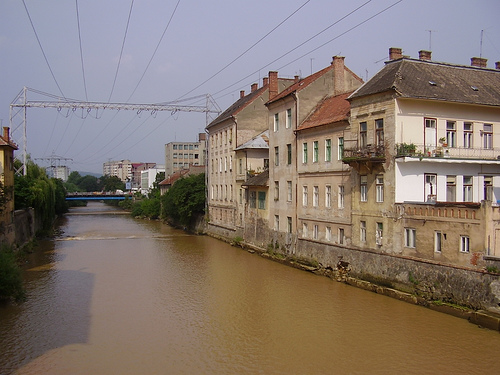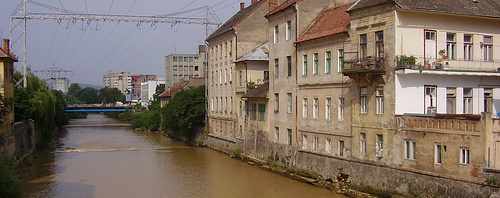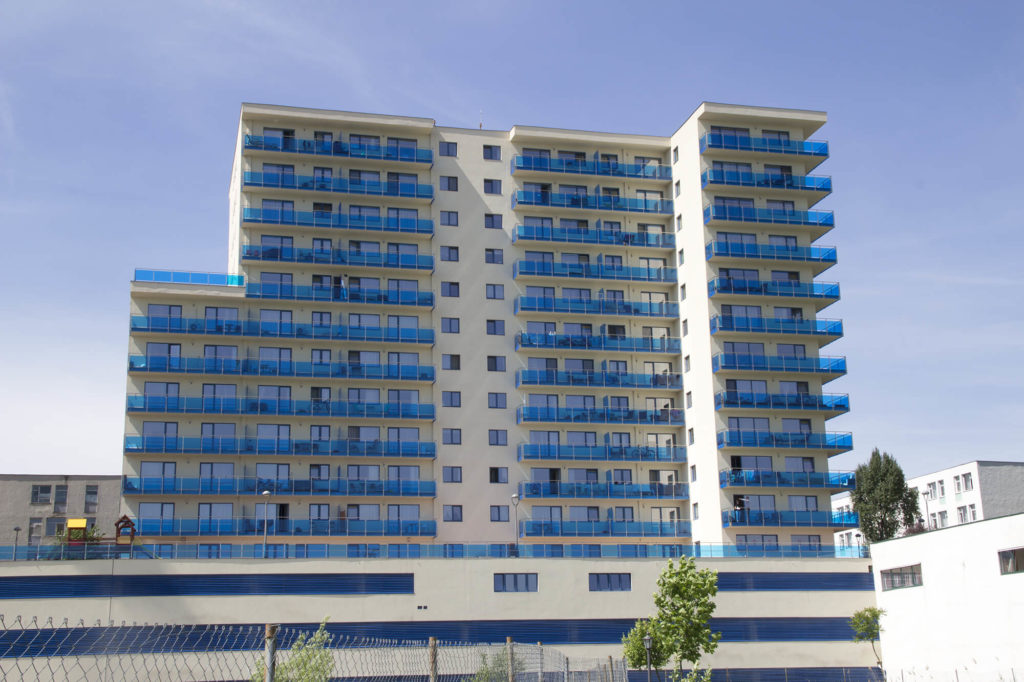
Note from the LeftEast editors: this piece has been published in cooperation with the Serbo-Croatian web portal Bilten.
The title of this text has a long history, originating with the tenants’ movement in New York City that was tackling the problem of unaffordable rent. I use this phrase because this is the exact feeling that a growing proportion of people living in Cluj-Napoca have when it comes to mounting rental prices in their community. Over the course of the last years, rents have skyrocketed in Romania’s second largest city, making it the most expensive city in the country, surpassing even the capital Bucharest.
Hence, students and low-income workers (the bulk of Cluj’s workforce) find it harder and harder to live in and afford this city. There is this idea that Cluj is a regional creative and innovation hub, yet almost 80% of its workforce earns less than the medium salary and up to 25% work on the minimum salary. Households earning two medium salaries would spend around 40% of their earnings on rent, while households earning the minimal wage would pay up to 80% of what they earn on rent.
For this reason, a group of people, mostly tenants, have organized the country’s first tenants association called the Tenants Association of Cluj (for more information click here). This idea of course is not new, not even for Romania, to our knowledge similar organizations existed in the inter-war period, but it is important to note that contrary to the situation in other countries, there is no possibility to legally have a tenants organization. Yet, before going into more details about this initiative I will try to describe the structural factors that led to this situation in Romania’s housing and rental market.
Romania’s Housing and Rental Market
Even though this is not the place to develop a lengthy analysis of the housing/rental situation in Romania, some aspects that pertain to the long transition from state socialism to market capitalism need to be brought up in order to better understand the housing situation and subsequently the market dynamics shaping rental prices. Thus, we begin with the fact that Romania is ranked first in Europe when it comes to homeownership, this being the case for the overwhelming majority of the population. 96.5% of the property in the country is owned privately leaving a meager 3.9% representing the rental market (one can find more housing statistics here).
This situation stems from the great shift in ownership legislated by the state when the communist system collapsed. Most of the housing units belonging to the state and socialist-era enterprises were sold off to their occupants. By way of this privatization process, running throughout the 90’s, the Romanian state’s own public housing stock was reduced to a mere 1.6% (the lowest percentage in the EU).

But the privatization process had another main component besides the ownership transfer already mentioned, which included the restitution of properties nationalized by the communist regime. The restitution process, in which former owners could get back their nationalized property, led in time to the development of an entire mafia built around remainder titles that people connected to the political class speculated upon. This is also the case in Poland, where remainder titles are a huge issue, though the level of gentrification in Poland is much more advanced than in Romania. It is worth mentioning that this restitution process led to a wave of forced evictions, especially of Roma people, since they were allotted housing by the communist regime in nationalized properties that they lost after `89. In other words, the privatization of former state-owned properties combined with the lack of any substantial investment in real estate by the state during the transition period, has produced a chronic shortage of housing units for an ever growing demand.
Yet these general dynamics can be observed at the local level as well: Cluj-Napoca is a university city, roughly a quarter of its population are students, and while the number of students has grown constantly in recent decades – even though Romania registers the fewest number of people with a college education in the EU 27 area – the housing facilities offered by the university did not keep pace with demand. In other words, although the University is financed with public money, it made little to no investment in new dorms, leaving an estimated 40.000 students in search of market-rate rental housing.
While in some areas we see a problem in the lack of investment by the state, in other aspects the problem is precisely the investment and action of the state referring given the fact that IT workers in Cluj (the biggest IT community in the country, giving Cluj the nickname of Romania’s Silicon Valley) receive important tax cuts to encourage investment, enabling them to afford growing rental prices. Furthermore, other state programs like the “First House” program – which implies that you can get a loan with small installment backed by the state to buy your first house – is actually funding the speculative growth of housing prices.
Such dynamics are part of wider financial plays between the ECB and national central banks, given the all-time lows in interbank interest rates. Of course, these actions by the state must be thought of as ways in which it responds to the investment of real estate companies with large quantities of free capital that needs to get invested and real estate is of course a good investment scheme. Thus, the growth of the housing market is supported by the existence of a managerial class (parts of the IT workforce, corporate managers, higher echelon state officials and so on) that affords these prices, while further pressure on the prices is exerted from below, from the numerous people, mainly students and entry-level workers, which seek a place to rent.
Therefore, Cluj-Napoca has entered into a development dynamic that lately is actually typical for the whole central European area, similar patterns of growth in the housing and rental market are developing in Budapest, Prague, or Warsaw. As was already stated, this is not the place for a satisfactory analysis of the structural factors that come into play when considering the housing market, so I would like to get back to the Tenants Association in Cluj and why its creation was something necessary in the present context.
Tenant Organizing in Romania
Although the association has been officially in existence for just a month, regular meetings for setting up this initiative took place for a good half-year prior to its launch. As earlier mentioned there is no legal provision in Romanian housing law for forming tenants’ associations, while there are specific provisions on the rights and possibilities of owners to associate and defend their interests. Thus one of our main long-term goals is for these kinds of tenants’ association to be legally recognized and their existence formalized in the law. This implies that the rental market would come out of the shadow economy, since it is estimated that more than 70% of renting contracts are not declared to fiscal authorities.
When it comes to the short-term goals of our tenants’ association, our main aim is to structure an alternative discourse on the tenant’s situation, a discourse that does not wish to reinforce the liberal standpoint of supply and demand. Of course, many people were already bitter with the prices before, but there was no alternative, either discursive or organizational to this status quo: you either take it or leave it. Consequently, we are highlighting the fact that there is a third option, which is organizing as a tenants’ association to try to halt the exponential advance of the rental prices. And there is no better way to achieve this than through new and sustained state (and university) investment in the real estate market.
In this sense there is already an initiative to amend the national strategy for housing in the sense of assuring a 20% quota of newly constructed flats that would be destined for affordable and social housing. Such initiatives, combined with the idea of having rent control or even rent ceilings, are already being used in Berlin, New York, and Madrid. It would enhance the national housing stock, while also taking into account that not all sectors of the workforce can pay market price for housing, given that housing is currently thought of as a commodity instead of being a human right.
We are now just laying the foundation for this new tenants’ initiative as we are just learning from the example of neighboring countries – with similar historical, economic, social and legal backgrounds – to tailor our solutions to fit the East European area (not only ideas envisioned in the so-called developed countries of the EU). We have already started contacts with other tenants’ organizations around Europe to further learn and organize the struggle for decent and affordable housing in Romania. The rent is too damn high and it’s about time that changes!


